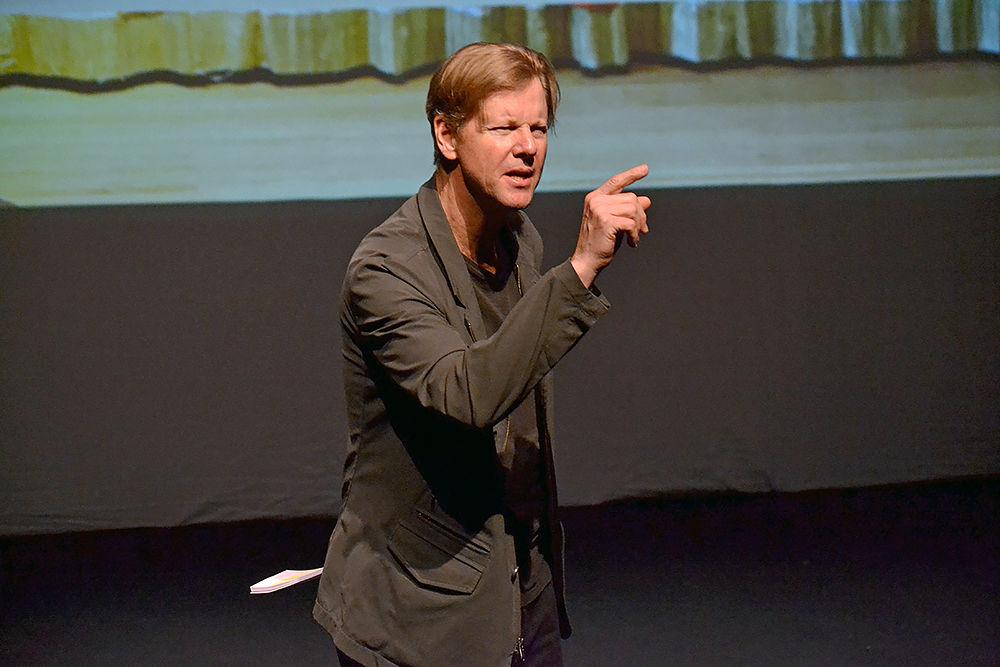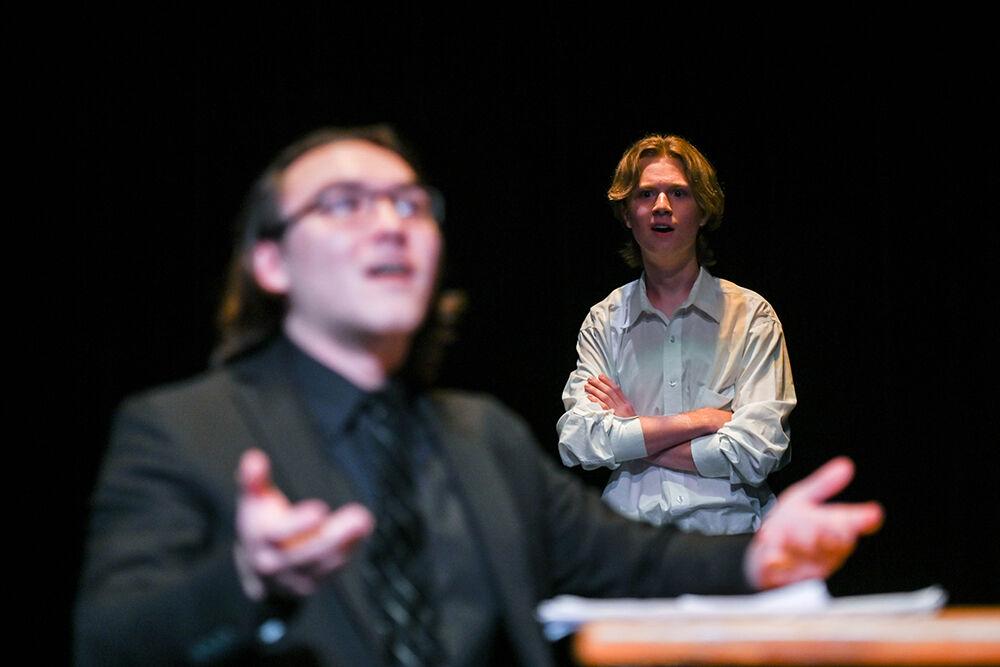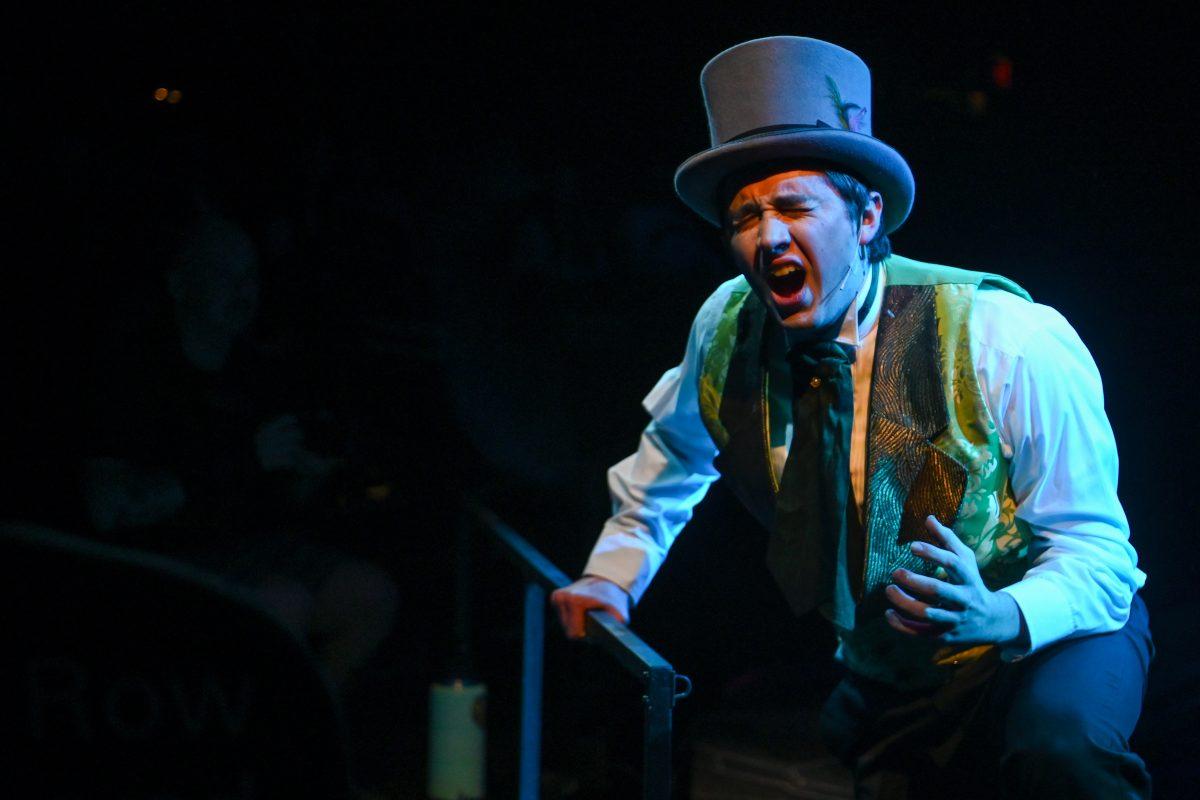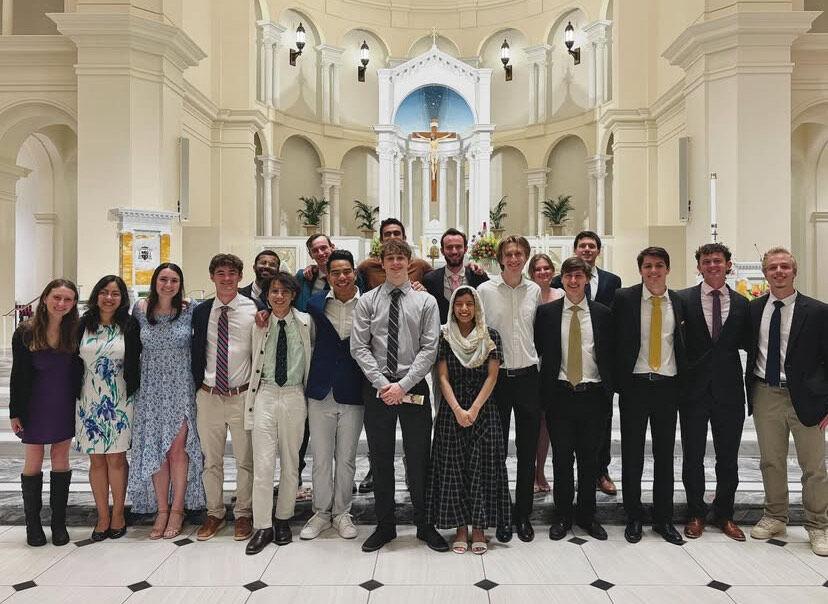University Theatre’s much-awaited performance of “Truth Against the World: The Life and Loves of Frank Lloyd Wright” took place in Kennedy-McIlwee Studio Theatre on Monday and Tuesday evenings. The play details the life of Frank Lloyd Wright, the famous architect most commonly known for his unique design style called “organic architecture.”
The play was both written and directed by critically acclaimed playwright and director Christine Toy Johnson, who is most commonly known for her original musical “Barcelona.” The play’s magic was cultivated by a sole actor who effectively told the story of the famous architect: Alan Campbell. A Tony-nominated actor who has appeared in plays, television and movies such as “Sunset Boulevard,” “Jake and the Fatman” and “Weekend Warriors,” Campbell put on a performance worth watching.
“Truth Against the World,” the play’s shortened name, is the product of Campbell’s fierce love of Frank Lloyd Wright along with Johnson’s own personal touch of creativity. Johnson worked to ensure Campbell’s dream of a play in honor of the renowned architect became a reality. Johnson commented on how she first met Campbell, and how his passion inspired her to write the work.
“My husband Bruce, who did all the artwork in the play, had understudied Alan in ‘Sunset Boulevard’ on Broadway,” Johnson said. “I had directed a production of ‘Seminar’ in Cape Cod with Alan as the lead and he kept on mentioning his obsession with Frank Lloyd Wright. About the fifth or sixth time he said ‘You know I’ve always wanted to do a solo piece about Frank Lloyd Wright,’ I said, ‘Why don’t I just write it for you?’”
During one scene of “Truth Against the World,” Campbell plays Frank Lloyd Wright at a press conference, where he is asked a series of questions regarding his personal and professional life. The questions are asked through flashcards that pose as reporters’ written-out questions for the architect. Campbell listed the benefits of the play’s monologue format.
“I have always been fascinated by this form; for an actor it’s a challenge,” Campbell said. “Let’s just be honest, it’s a difficult form. I’ve always loved singers that could have a guitar and go anywhere and sing a song and entertain, and I said ‘Well, [how can I do this] as an actor not singing and trying to do this as a piece that could travel easily and be easily affordable for schools, for a community organizations [and] for architectural interests. It would be easy to have just a suit of clothes and couple of pieces of the stage.”
Perhaps the play’s most important prop was located off-stage: the projector. It projected images of Wright’s buildings as they were discussed in the play, but more importantly it displayed pictures of people in Wright’s past – especially the women. These featured women were primary components of the play, communicating with Wright throughout the production. This element added a twinge of eerie darkness contrasted with Wright’s biting sarcasm and wit which Campbell effectively portrayed throughout the performance.
While not physically present, the women in Wright’s life commanded strong roles throughout the show. The desire to include these women encouraged Campbell’s original idea for “Truth Against the World: The Life and Loves of Frank Lloyd Wright” – to not only be an educational work, but also a way to show how others shape one’s life in a myriad of ways. Campbell is enthused about Johnson’s inspiring methods of exploring Wright in a unique way.
“We wanted to do something, or at least try [something] that wasn’t necessarily academic, and Christine is the one who came up with finding a way into him through some of the women in his life … because there was always a woman in his life,” Campbell said. “They were all very, very important in his life.”
Johnson, however, was originally drawn to the story through Wright’s ability to fight through the doubters of his success as both an architect and artist. Johnson desired to highlight how age doesn’t play a part in the face of discovery – or, at least, to show that it didn’t matter to Wright.
“One of [the] things that have moved me in exploring his story is his sheer perseverance,” Johnson said. “People would say, ‘You are 65, you’re done,’ but he had yet to create two of his most famous and most enduring masterpieces [at that age]. … That’s very moving to me.”
The performance demonstrated a mix of a documentary-vibe and a thrilling drama, and impressed the audience with its dramatic storytelling ways. At heart, “Truth Against the World” presented an honest representation of the life of Frank Lloyd Wright.












